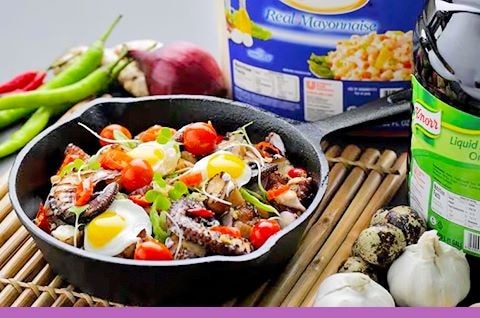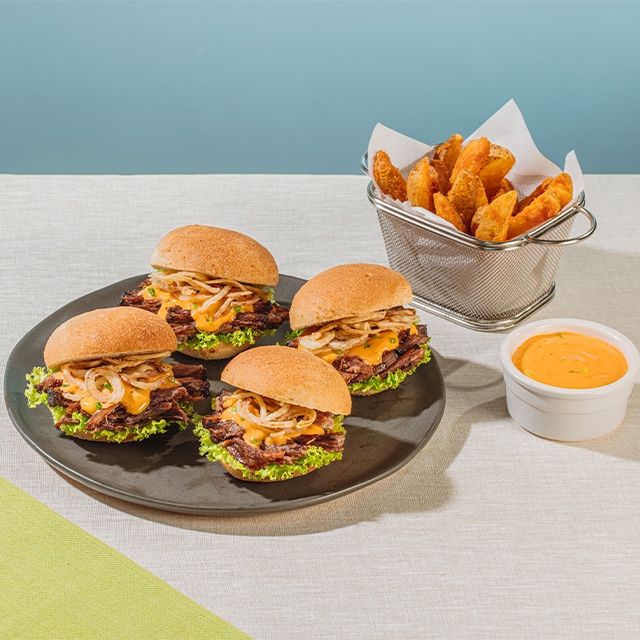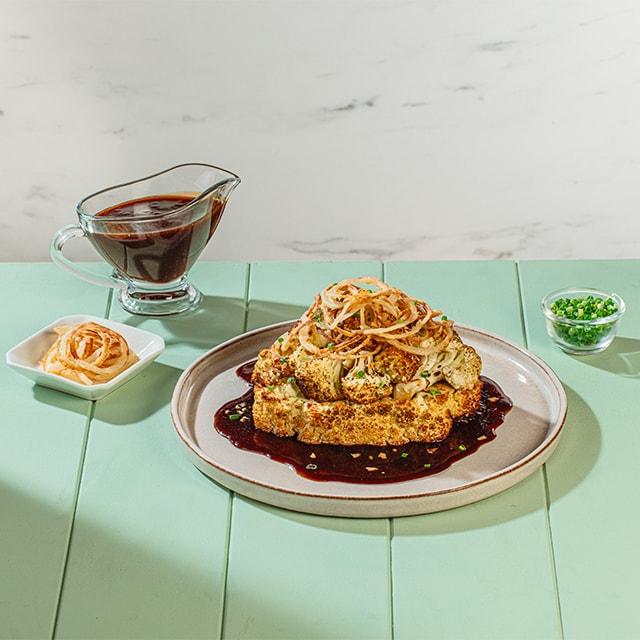Traditional Filipino dishes are the ultimate comfort food for many diners. Think adobo, pancit, and inasal – all celebrated for their homey, humble flavors. However, there’s also a rising demand for innovative dining experiences. The challenge for local food businesses? Reimagine classic Filipino recipes to offer something new yet familiar.
If you’re looking to expand your client base and project a hipper image, now is the time to embrace the “Modernized Comfort Food” trend. Read on to explore modern comfort food examples and learn how to deliver the culinary escape diners crave today.
1. Highlight Local Produce

Try different grains to reinvent your arroz caldo.
The goal is to make your menu relatable yet surprising. Stick to familiar comfort fare but incorporate unexpected elements to captivate diners. Experiment with your ingredients by going deeply local. Explore the abundance the archipelago has to offer. Also, familiarize yourself with regional delicacies and bring these flavors closer to your guests.
You can start with a beloved Filipino comfort food. Arroz caldo is already comforting on its own, but updating its components can elicit pride and excitement. Transform this classic through creative ingredient incorporations, swaps, and reimaginations. In this case, replace malagkit with heirloom black rice for a nuttier, more complex profile.
Embracing local produce also involves promoting sustainability and minimizing waste. Make sure you utilize every part of your ingredients. For instance, choose native chicken for your modernized arroz caldo. Utilize the meat for the dish’s protein, make an umami-rich stock from the bones, and crisp up the skin for topping.
2. Provide Accessible Luxury

Make sisig using unconventional proteins like octopus.
Despite economic challenges, diners still seek small luxuries to escape and explore. They crave the best comfort food that nods to their heritage while elevating flavors to new heights. It’s not enough to offer luxury for luxury’s sake. The real added value comes from the history, innovation, and meticulous craftsmanship presented.
Meet this demand by introducing a new version of sisig to your menu. Skip the usual pork face and go luxe with pulpo. When using unconventional ingredients like this, remember to keep the recipe approachable. Chop the octopus into bite-sized pieces so its appearance doesn’t intimidate guests. Cook it with bagoong alamang, coconut milk, and Knorr Liquid Seasoning for some familiarity. And finish with fried quail eggs and cherry tomatoes for a refined yet charming touch.
3. Break Age-Old Rules
 Combine two Filipino favorites in a way that’s sure to surprise and delight your customers.
Combine two Filipino favorites in a way that’s sure to surprise and delight your customers.
Don’t hesitate to break the conventions of traditional Filipino cuisine. Diners appreciate bold moves that challenge norms and result in one-of-a-kind dishes. Don’t limit yourself to what you learned in culinary school. Test, experiment, and evolve to make your mark.
Take pancit and kare-kare – two staples that follow set rules: tender noodles for pancit and steamed white rice with kare-kare. But why not shake things up? Introduce crispy pancit with mixed seafood kare-kare to your menu.
For this dish, fry vermicelli noodles until they’re crisp, then top with a rich kare-kare sauce made with Knorr Shrimp Seasoning Powder, lemongrass, and Lady’s Choice Peanut Butter. Complete the cast with the usual kare-kare veggies and some shrimp, squid, and fish fillet. Expect customers to line up for this creation!
4. Tweak the Usual Elements
 Transforming soup into gravy is a quick and effortless way to wow customers.
Transforming soup into gravy is a quick and effortless way to wow customers.
Challenge Filipino comfort food further by altering a dish’s integral elements. The change should be daring enough to excite your customers: modify the temperature of a dish, turn soup into a thick sauce, transform something orange to white, or make a typically meaty dish vegetarian. Don’t be afraid to play with extremes!
Case in point: sizzling sinigang beef shanks. Begin by cooking your usual sinigang. Sauté aromatics in oil, simmer the meat until tender, and season the broth with Knorr Sinigang sa Sampalok Mix. Then, the fun begins! Transform the soup into an umami-rich gravy. Then, place the beef on a sizzling plate and pour the sauce all over. Finish with garlic chips and blanched greens and serve with steamed rice.
5. Uncover Origin Stories
 Diners crave the stories behind the dish, the ingredients, and your creative process.
Diners crave the stories behind the dish, the ingredients, and your creative process.
The “Modern Comfort Food” trend is all about sharing authentic stories. Diners no longer want just a meal; they seek narratives. Your customers crave insights into what they’re eating, how it was conceptualized, and why certain ingredients are included. They want to know who farmed the proteins, where the vegetables were sourced, and when the produce was harvested.
Bring this storytelling to life with a dish like steamed glutinous rice with aromatic chicken adobo. This creation marries Chinese machang, glutinous rice and preserved meats in bamboo leaves, and the Maranao pater, turmeric rice with shredded chicken. When serving the dish, highlight the source of the rice, the preparation of the spice paste, and the technique that keeps the dish moist and tender. That’s how you’ll keep your customers hooked!
6. Keep Things Fun
 Infuse your menu with fun by taking cues from Western food pairings.
Infuse your menu with fun by taking cues from Western food pairings.
Recipe development is serious work, but allow yourself to have fun throughout the process! This joy will translate into your menu, which your customers will appreciate. Don’t stress over making every dish revolutionary and out-of-this-world. Keep your offerings fuss-free and unpretentious – then the fun will follow.
Bibingka waffles with sinigang fried chicken are a terrific example. This modern Filipino food allows you to transform the kitchen into a playground. Amp up the excitement by serving arnibal-coconut glaze on the side. Then, let your guests have just as much fun by allowing them to enjoy the dish their way. You can even offer disposable gloves in case they want to dig in with their hands.
Now, you’re ready to give traditional comfort food a modern spin. Remember, “modern” can mean different things for different people. So, discover what works best for you and your customers, and build around that. Enjoy the process! If you want to learn more about modern comfort food and other top trends, download the Future Menus report today.









